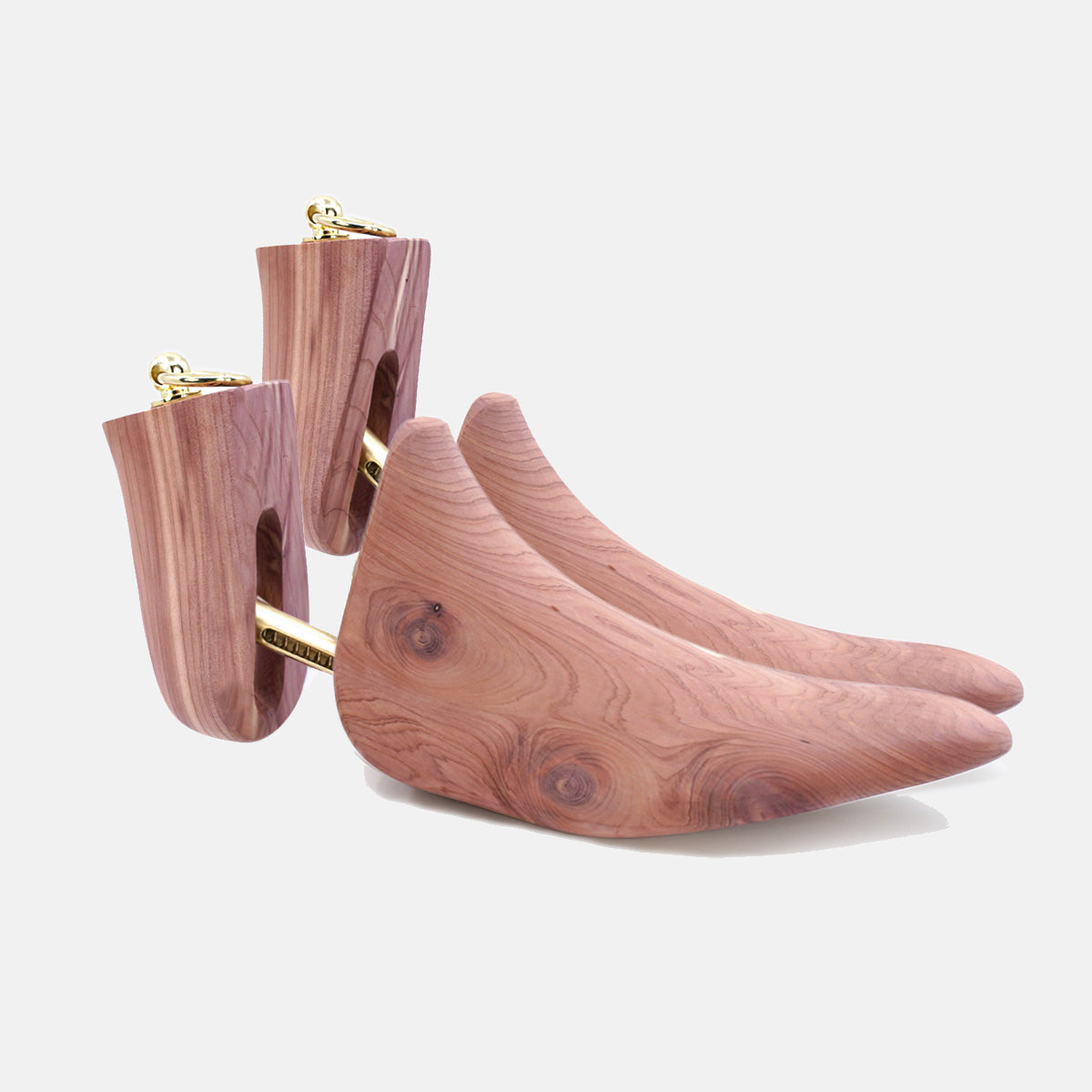Get 10% Off - Auto Applied At Checkout
Get 10% Off - Auto Applied At Checkout
Shoe Trees
shoe stretchers
Sets

The Australian Service Boot - Creating an enduring service boot (Part III)
June 26, 2023 3 min read
In developing the service boots for the 2020 Collection we looked to Australia's military heritage for inspiration, which we found in no short supply.
In parts one and two, we reviewed the service boots used by Australian soldiers in World Wars One and Two. From the landing at Gallipoli to the defense of Australia at Kokoda, these boots, like the men who wore them, adapted, endured and ultimately helped two Army's contribute to ultimate victory.
This impressive heritage inspired us to want to create an enduring service boot of our own, which we based broadly on the 1912 and 1934 models.
Classic, Simple, Lasting
The first thing agreed upon was to stay true to the service boot's classic design: ankle-high, open lace, backstay and counter, vamp and quarter.
 The Jacka Last, named after Albert Jacka VC, Australia's first Victoria Cross recipient in WW1
The Jacka Last, named after Albert Jacka VC, Australia's first Victoria Cross recipient in WW1
We had Northampton last manufacturer Spring Line modify one of its classic boot lasts and the aptly named (Albert) Jacka (VC) last is currently used for all service boots.
The 1912 Model
The 1912 model was lightweight and durable, made for rugged terrain and warmer climates, no doubt influenced by Australia's involvement in the Boer War in South Africa at the turn of the 20th Century.
 The 1912 Model Service Boots (Image: Australian War Memorial)
The 1912 Model Service Boots (Image: Australian War Memorial)
The 1912 model was put to good use at Gallipoli and served the Anzacs exceedingly well right up to October when the colder weather set in and the boots limitations became evident. But its rugged utility in the opening months of the campaign and its dependability in conditions similar to Australia became the basis on our first service boot, the Turon, would be built around.
 The 1912 model inspired the design for our Turon Stitchdown Service Boots
The 1912 model inspired the design for our Turon Stitchdown Service Boots
Of course, the Turon is an inspired version, not a carbon copy.
Component |
1912 Model |
Turon |
| Leather | Brown in whatever leather was available to the local Bootmaker | Brown French Calf |
| Construction | Basic stitch and nail construction | Stitchdown Construction |
| Sole | Single composite leather sole with hob nails fitted to the outsole | Leather Insole, cork footbed, Studded Vibram Rubber sole |
We selected a beautiful, translucent brown French calf for the leather. Back in WW1, Anzacs still had to polish their boots when they weren't on the front line. We wanted boots that could be worn hard but also polished up when the situation arose. The alternative was using a popular boot leather, the chrome and vegetable tanned Chromexcel, but being an oil-packed leather, it would have meant abandoning all hope of buffing out a nice shine.
We departed from the basic stitch and nail construction and opted for a Stitchdown construction. The method we use is slightly more complex than the traditional Stitchdown technique, but similarly lightweight and sturdy like the 1912 model. To play it safe, and to protect floorboards everywhere, we decided against 'hob nob nails,' instead opting for a studded rubber sole by Vibram.
The 1934 Model
Our Brooke Cap Toe Service Boot was inspired by the 1934 model. What impressed us about the model was the inclusion at the point of production of all the lessons learned and important field modifications made in WW1 and it served the Australian Army with distinction right through to the Kokoda campaign.
 The 1934 Model - Cap Toe Version (Image: AWM)
The 1934 Model - Cap Toe Version (Image: AWM)
We opted for a Goodyear welt construction for the Brooke. The 1934 model, like all models after the 1912 model, used a more complex and uniform construction method. It was also the first time a cap toe was introduced, to allow the insertion of a reinforced toe plate.
 The Brooke Cap-Toe Service Boots in Dark Oak
The Brooke Cap-Toe Service Boots in Dark Oak
A variation of our Brooke was also influenced by the 1934 model. The leather had quite a bit of red in their patina. It is unclear if this was an emerging style, a result of common dyes used at the time or simply fading of its original brown colour. Either way, it inspired us to create a variation in Dark Oak French calf leather, a brown with quite a bit of red running through it.
Giving new life to a heritage boot
We work in an industry where heritage matters. History has shown that new (and old) brands who ignore (or forget) this do so at their peril. Prior to this exercise, we had a vague idea that we needed to create a boot. Learning about the history of our service boot gave us a focus we did not have up until that point and a motivation to create a boot that honoured its proud heritage and serve our customers through all life's adventures. We're delighted to bring the humble service book back to life in Australia via our 2020 Collection.
Leave a comment
Comments will be approved before showing up.
Subscribe
Sign up to get the latest on sales, new releases and more …











